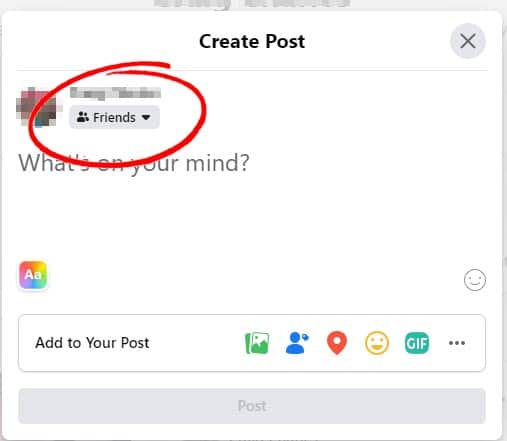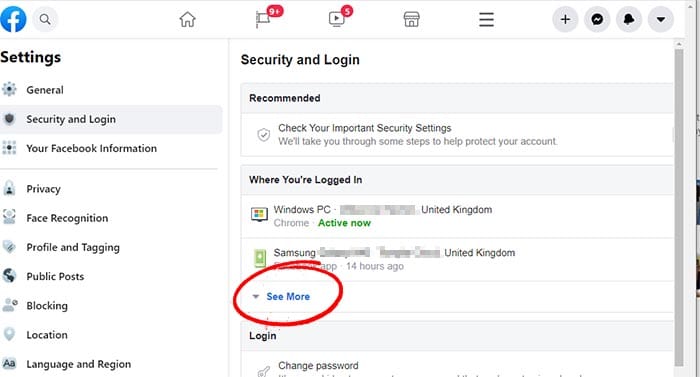4 quick monthly privacy check-ups for your Facebook account
Your Facebook account most probably contains plenty of personal information about you. Information you probably don’t want stolen, or lost forever.
To make sure that doesn’t happen, you want to make sure your account is both private and secure. That’s why we have our ultimate guide on locking down your Facebook account here. We recommend going through that guide about once a year to make sure everything is as locked down as it should be.
But there are a few things that should be checked more frequently than that to make sure your account and your information is as private as it can be. These are some quick and easy checks that we recommend going through every month or so.
Check your default privacy for posts
Your default privacy is the global setting on Facebook that determines the default visibility of everything you post, including posts and photos. It’s also quite easy to change by accident, so we always recommend checking this setting is correct.
That is because this privacy option is embedded in the create post box. Each time we create a new post, we can choose whether we want that post to be seen by friends or the public. While it may seem that this setting would only apply to that one particular post, it actually changes the privacy default setting, meaning any future posts will keep that privacy setting. See below.

We strongly recommend this is set to friends only.
To change your default privacy setting, go your main settings (arrow on top right for desktop users, the three lined icon for mobile app users) and select Settings & Privacy, then Settings and then under privacy it’s the Who can see my future posts? option.
Sponsored Content. Continued below...
Check photos of you that are public
Whether its photos that you’ve uploaded, or photos that other people have uploaded with you tagged in them, if they’re set to public, anyone can see them. Strangers. Ex-partners. Criminals. Perspective employers. Professional contacts or work colleagues. Public means anyone.
The Facebook Activity Log lets us quickly check the photos we’ve uploaded or been tagged in that have been set to public, so we can see if anything needs to be removed.
We recommend doing this on Facebook’s web version as not all mobile users can currently do this. Click the arrow on the top right and then Settings & Privacy and then Activity Log. Click Filter on the top left of the page, and then select Photos and Videos, and select the Privacy option to Public. Then click Save Changes.
On the left will be photos you’re tagged in that are set to public. Annoyingly, after the 2020 Facebook update, they’ve now grouped these photos along with any photo that you’ve uploaded (that’s set to public) regardless of whether you’re in the photo or not. That means some of these photos won’t be relevant. For example, if you post photos in public groups like buy/sell groups, these photos will also show up. You’ll just need to scroll past them.

We have an article dedicated to seeing what posts of you are set to public which you can read here.
Check active sessions
Each time you login to Facebook on a different device or browser, it creates an active session. If you log-off Facebook, the active session is closed. However it’s very easy to forget to log-off Facebook, or to simply close the browser. This may leave you logged into Facebook on that device, which isn’t good if the device belongs to someone else or is a shared computer.
However, we can always close active sessions that are active on any device we don’t recognise or no longer wish to be logged into our account. That means using your own phone or computer, you can force your Facebook account to logout of any device you wish.
On Facebook for desktop, click the down arrow on the top right and select Settings & Privacy and then Settings. Then select Security and Login.

On the mobile Facebook app, click the three lined horizontal icon, then select Settings & Privacy. Then Settings.. Then select Security and Login.
Then you can review all the current active sessions under Where You’re Logged In for your account. Each session will include the browser, device and approximate location of the login. Log out of any you wish by clicking the three dotted icon next to each, including ones you don’t recognise.
Sponsored Content. Continued below...
See YOURSELF as a stranger
A potentially handy trick that Facebook lets you do is to see your own profile as if you were a stranger.
This gives you a great, quick oversight into what you are sharing with the public, and highlights any potential privacy concerns. Remember that when you do this, you are navigating your profile as a stranger. Any person can see this if they go to your profile.
And if you see anything that concerns you, you can alter privacy settings or remove content until you are happy.
To do this on Facebook for desktop, go to your profile and click the three dotted icon that is overlaid onto your cover photo and select View As.
On the Facebook mobile app, go to your profile and click the three dotted icon underneath your name and select View As from the menu.
Remember to check your timeline, photo albums and posts like this.
Continued below...
Thanks for reading, we hope this article helped, but before you leave us for greener pastures, please help us out.
We're hoping to be totally ad-free by 2025 - after all, no one likes online adverts, and all they do is get in the way and slow everything down. But of course we still have fees and costs to pay, so please, please consider becoming a Facebook supporter! It costs only 0.99p (~$1.30) a month (you can stop at any time) and ensures we can still keep posting Cybersecurity themed content to help keep our communities safe and scam-free. You can subscribe here
Remember, we're active on social media - so follow us on Facebook, Bluesky, Instagram and X
